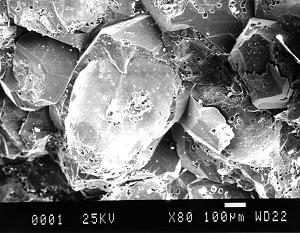

Please note
Diagenesis refers to the physical and chemical changes which take place after the deposition of a sediment.
|
Boggs, 1995, pp. 185-193: Diagenesis Tucker, 1991, pp. 54-65 |
|
|
Note: all references to Boggs, 1995 and Tucker, 1991 in these pages refer to: BOGGS, S. 1995. Principles of Sedimentology and Stratigraphy (2nd edition). Prentice Hall. TUCKER, M.E. 1991. Sedimentary Petrology (2nd edition). Blackwell. |
Porosity is an aspect of texture which is of particular interest to the economic geologist, because it is in the pore spaces that economically valuable fluids such as oil, gas or water may be contained.
Primary porosity is formed at or before the time of deposition: it occurs between and within the grains.
Secondary porosity is formed during diagenesis, usually by solution/dissolution of components of the rock.
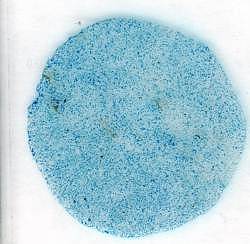 |
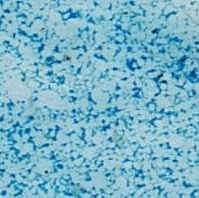 |
The images in the left hand column show thin sections of two sandstones which were impregnated with blue resin, to show up the porosity. Close-ups of each are seen in the centre column. The sections are taken from core 25 mm in diameter. |
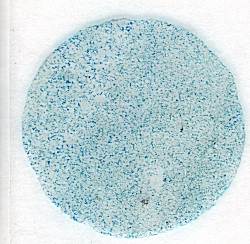 |
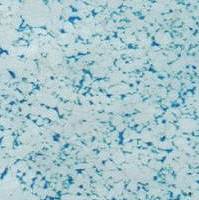 |
Estimate the percentage porosity for each of the thin sections. |
Both primary and secondary porosity are progressively destroyed as sediments are buried, mainly by processes of compaction and cementation.
When describing a thin section, estimate the percentage porosity, and try to distinguish whether it is primary or secondary.
Early cementation protects sand grains from compaction. Common compactional effects include:
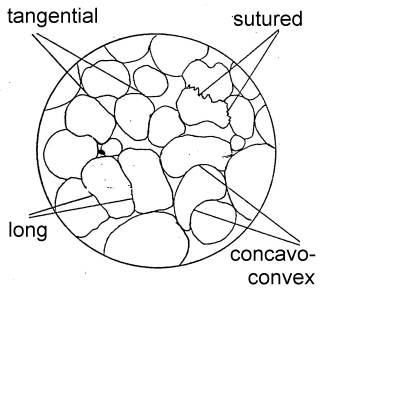 |
The diagram (after Taylor, 1950) shows the various types of grain contacts
found in sandstones. You will often find more than one type in a single
thin section, but are unlikely to find all four types together.
|
*grain contact dissolution is a form of pressure solution. The grains dissolve at their contacts due to overburden pressure during burial. The often large volumes of material may later be precipitated as a cement elsewhere in the system.
|
Boggs, 1995, p. 107: Grain contacts Tucker, 1991, pp. 17-18 |
Destruction of porosity occurs, first of all, by rotation and closer packing of the grains; then, as burial progresses, by deformation and dissolution of the grains.
chemically precipitated material, whether a new mineral, or an addition to an existing mineral, may form a cement, which binds the grains of the sediment together to form a rock.
Cement is (usually) crystalline material precipitated in pore spaces from solution.
The most common cements in sedimentary rocks are carbonate minerals (especially calcite and aragonite) and silica. These precipitate under different chemical conditions:
Very commonly, quartz cement grows as a continuation of the original quartz grain. Together, the grain and cement form a single crystal, although the two parts of the crystal have very different ages. These are syntaxial quartz overgrowths.
|
Boggs, 1995, pp. 162-163: Cements Tucker, 1991, pp.56-61: Cements |
This page was written by Roger Suthren
Last Modified: 24 April, 2015 18:41